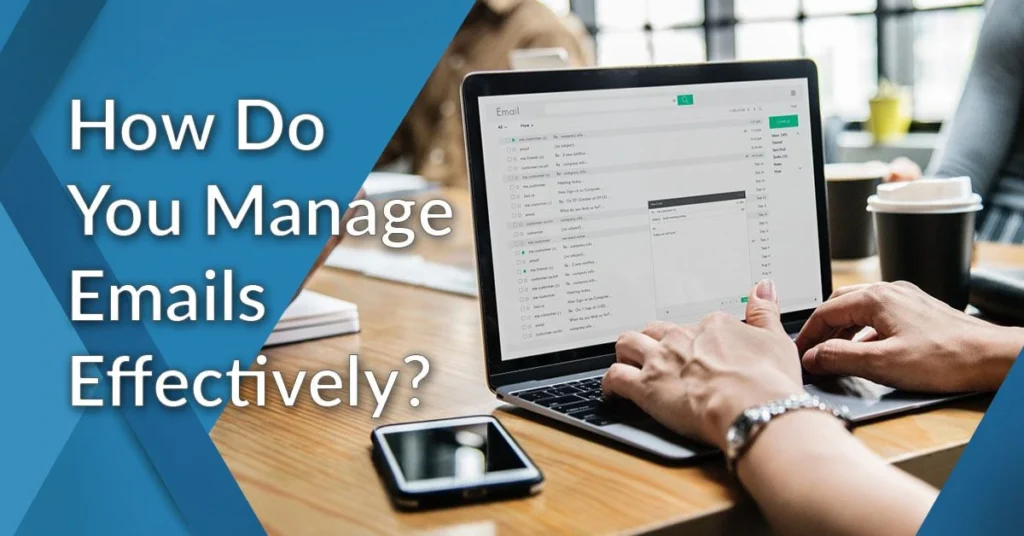Are you drowning in a sea of unread emails? Does your inbox feel more like a burden than a tool for productivity?
You’re not alone. Managing email effectively can transform your daily routine, reduce stress, and boost your efficiency. Imagine starting your day with a clean inbox and a clear mind. Sounds refreshing, right? This article will guide you on how to regain control over your emails, making them work for you rather than against you.
Stick around and discover tips that will save you time, enhance your focus, and bring back the joy of communication. Don’t let your inbox dictate your day; take charge and see the difference it makes.

Credit: www.saleshandy.com
Email Overload Solutions
Email overload can be overwhelming. Many find it hard to manage daily emails effectively. This constant influx of messages can disrupt productivity and focus. Finding solutions to manage this overload is essential. Simplifying and organizing emails can save time and reduce stress. Let’s explore some effective strategies to tackle email overload.
Organize Your Inbox
Start by creating folders for different topics. Label them clearly and sort emails accordingly. This helps find important emails faster. Use filters to automatically direct emails into specific folders. This organization keeps your inbox neat.
Set Email Checking Times
Avoid checking emails constantly. Set specific times during the day to read and respond. This prevents distraction and allows focus on other tasks. Limit these sessions to 20 minutes. This keeps email management efficient and prevents time wastage.
Unsubscribe From Unnecessary Newsletters
Identify unwanted newsletters cluttering your inbox. Unsubscribe from those that no longer provide value. This reduces the number of incoming emails. Focus only on subscriptions that offer useful information. This keeps your inbox clean.
Use Email Management Tools
Consider using tools like email filters and organizers. These tools help automate sorting and prioritizing emails. Some tools can even remind you to follow up on important messages. They streamline your email management process.
Prioritize Important Emails
Identify urgent emails and address them first. Mark them with a star or flag. This ensures crucial tasks are not overlooked. Prioritizing helps manage time better and avoids missing deadlines.
Delete Emails Regularly
Clear out old emails regularly. Delete those that are no longer needed. This prevents clutter and makes searching for important emails easier. A clean inbox boosts productivity.
Organizing Your Inbox
Organizing your inbox can transform how you manage emails. A cluttered inbox causes stress and confusion. Streamlining your email system can improve productivity and focus. You can achieve a cleaner inbox with simple strategies. Prioritizing emails and creating a structure is key.
Categorizing Emails
Categorizing emails helps to find important messages quickly. Start by sorting emails into main categories. Examples include work, personal, and urgent. Assign each email to its appropriate category. This practice saves time and reduces overwhelm. Consistent categorizing keeps your inbox organized.
Creating Folders And Labels
Folders and labels add structure to your email management. Create folders for each category you defined. Use labels to highlight specific topics or projects. This method ensures easy access to relevant emails. Regularly review and update your folder system. A well-maintained structure aids efficiency.
Prioritizing Emails
Organize your inbox by sorting emails by importance and urgency. Respond to critical messages first. Use folders and tags to keep everything tidy. Regularly clear out unneeded emails to maintain focus and efficiency.
Prioritizing emails can transform your inbox from a source of stress into a streamlined tool for productivity. With the daily avalanche of emails, it’s easy to feel overwhelmed. However, focusing on prioritization ensures you handle the most important messages first, freeing up time and mental space for other tasks. A well-managed inbox can enhance your focus, efficiency, and overall job satisfaction.
Identifying Urgent Emails
Start by setting criteria for what makes an email urgent. Ask yourself: Does this require immediate action or response? Emails from your boss or about a project deadline often fall into this category.
Use filters to automatically sort and highlight emails from key contacts. This way, you can spot important messages at a glance, even in a crowded inbox. Additionally, scanning subject lines for keywords like “urgent” or “action needed” can help you quickly identify priority emails.
Using Flags And Stars
Flags and stars are simple tools that pack a punch in email management. They visually separate important emails from the rest, making it easier to revisit them later.
Implement a consistent system for using these markers. Perhaps a red flag indicates an urgent task, while a star marks emails requiring follow-up. Regularly review flagged and starred emails to ensure nothing slips through the cracks.
Consider creating a table to track flagged emails, noting the sender, subject, and action required. This can serve as a quick reference and ensure you stay on top of your priorities. How do you use flags and stars in your email routine? Experiment to find a method that complements your workflow.

Credit: www.yandex.com
Time Management Techniques
Efficiently managing emails involves setting specific times to check your inbox. Use folders and labels to organize messages. Limit responses to concise replies and prioritize important emails to maintain focus and productivity.
Managing your email can feel like a never-ending task, but effective time management techniques can transform your inbox from a source of stress to a tool for productivity. By setting specific times to check emails and resisting the urge to constantly refresh your inbox, you can regain control over your day. Let’s dive into some practical strategies that will help you manage your email more efficiently.
Setting Specific Email Times
One effective way to manage your email is by designating specific times in your day to check your inbox. This could be once in the morning, once after lunch, and once before you finish your workday. By doing this, you create a predictable schedule that prevents email from interrupting your focus on other tasks.
A personal experience I had was when I found myself checking emails every few minutes, which made it hard to concentrate on projects. By scheduling email time, I noticed a significant boost in productivity. You might find it helpful to set an alarm or reminder to stick to your planned schedule.
Consider using tools that can help you manage this process. Many email clients allow you to pause incoming messages, ensuring you aren’t tempted to peek at your inbox during non-scheduled times. This way, you won’t miss out on important communications but will handle them when it suits you best.
Avoiding Constant Checking
Breaking the habit of constantly checking your email can be challenging but worthwhile. Every time you check your inbox, it can take several minutes to regain focus on your previous task. Imagine how much time you could save by reducing these interruptions.
One approach is to turn off email notifications on your devices. This simple step can significantly reduce distractions and help you stay focused on your priorities.
Ask yourself: Do you really need to be available every minute of the day? Often, urgent matters are handled just as well with a slight delay, allowing you to maintain control over your time and focus.
By implementing these time management techniques, you’ll discover more time for what truly matters. The key is to be intentional with your email habits, ensuring that your inbox serves you, not the other way around.
Effective Email Writing
Email writing can be a powerful tool for communication. Effective email writing requires clarity and precision. Well-written emails save time and reduce misunderstandings. They help convey your message clearly and professionally. Let’s explore how to write emails that are efficient and engaging.
Crafting Clear Subject Lines
The subject line is the first thing recipients see. It should be direct and informative. Use simple language to summarize the email’s purpose. Avoid vague words that leave the recipient guessing. Instead, be specific and concise. For example, “Meeting Reschedule: New Date and Time” tells the reader exactly what’s inside. A clear subject line encourages the recipient to open your email.
Concise Content And Structure
Email content should be brief and structured. Begin with a greeting, then state your purpose. Use short sentences to keep attention. Organize information using bullet points or numbered lists. This helps readers digest content quickly. Include only necessary details to avoid clutter. End with a clear call to action or a summary. Proofread your email to correct errors and ensure clarity. Proper structure makes your email easy to read and understand.

Credit: www.centuran.com
Utilizing Email Tools
Managing emails can feel overwhelming. But with the right tools, it becomes easier. Email tools can streamline your inbox and save you time. They help organize, automate, and integrate different tasks. This way, you focus on important emails without missing anything vital. Below, learn how to use email tools effectively.
Automating Responses
Automating responses is a smart way to handle repetitive tasks. Set up auto-replies for common questions. This saves time and keeps your inbox tidy. Use templates for frequent emails. Templates allow quick, consistent replies. Customize them to suit different situations. This personal touch makes your communication feel genuine.
Integrating Productivity Apps
Boost efficiency by integrating productivity apps with your email. Apps like calendars and task managers can connect with your inbox. This syncs your schedules and tasks in one place. It reduces the need to switch between apps. You can track deadlines and appointments more easily. This integration helps you manage your workload better.
Reducing Email Distractions
Emails can be a major source of distraction. Constant notifications pull us away from important tasks. Managing these distractions is key to improving productivity. By setting boundaries and controlling notifications, you can focus better.
Turning Off Notifications
Email notifications demand immediate attention. They disrupt workflow and concentration. To reduce these interruptions, turn off notifications. Check emails during specific times instead. This habit allows you to focus without sudden distractions. Using this method, you control your schedule, not your inbox. Try setting a few specific times to check emails. Perhaps once in the morning and once in the afternoon. This can help maintain a steady workflow.
Setting Boundaries
Boundaries help maintain focus on tasks. Inform your colleagues about your email schedule. Let them know when you are available for urgent matters. This creates a mutual understanding and respect for your time. Set specific hours for checking emails. Stick to these hours consistently. This ensures you are not overwhelmed by constant email checking. It also helps prioritize tasks and manage time better. Create an auto-response to inform senders of your email routine. This transparency helps manage expectations and reduces stress.
Email Security Practices
Protect sensitive information by using strong passwords and enabling two-factor authentication. Regularly update software to guard against vulnerabilities. Stay vigilant by recognizing phishing attempts and reporting suspicious emails promptly.
Email Security Practices
Email is one of the most common ways we communicate in the digital world. But with convenience comes risk, especially when it concerns your security. How often do you worry about sensitive information getting into the wrong hands? Have you ever wondered how many phishing attempts you might have unknowingly dodged? Understanding and implementing effective email security practices can safeguard your information and give you peace of mind. Let’s delve into some key strategies to enhance your email security.
Protecting Sensitive Information
Keeping sensitive information safe is crucial. Start by using strong, unique passwords for your email accounts. A password manager can help you manage them without hassle.
Enable two-factor authentication (2FA) to add an extra layer of security. This way, even if someone gets your password, they would need a second verification method to access your account.
Consider encrypting emails that contain sensitive data. Encryption ensures that only intended recipients can read the email. Have you ever sent a confidential email and worried if it was intercepted? Encryption could be your solution.
Recognizing Phishing Attempts
Phishing attempts are sneaky and can trick even the most cautious users. Always check the sender’s email address. A small typo or odd domain can be a red flag.
Be cautious with links and attachments, especially from unknown senders. Hover over links to see where they lead before clicking. Have you ever clicked on a suspicious link and felt a pang of regret?
Trust your instincts. If something feels off or too good to be true, it probably is. Does the email ask for personal information or passwords? Legitimate companies never request such details through email. Stay alert and question suspicious emails.
Taking these steps not only protects your information but also empowers you to navigate your inbox safely. Email security isn’t just a tech issue; it’s a personal responsibility. What steps will you take today to secure your email?
Frequently Asked Questions
How Can I Prioritize My Emails Effectively?
Start by categorizing emails based on urgency and importance. Use folders or labels to organize them. Focus on high-priority emails first. Regularly review your inbox to ensure nothing is missed. Consider using tools or features like flags or stars to highlight crucial emails.
What Are The Best Practices For Email Management?
Set specific times to check emails and avoid constant inbox monitoring. Use filters to automatically sort incoming messages. Unsubscribe from unnecessary newsletters. Keep your inbox clean by archiving old emails. Respond promptly to important emails to maintain effective communication.
How Do I Reduce Email Overload?
Limit the number of subscriptions and newsletters you receive. Use concise subject lines to identify emails quickly. Regularly clean out your inbox and delete irrelevant emails. Implement filters to sort emails automatically. Encourage colleagues to use direct messaging for urgent matters.
How Often Should I Check My Email?
Check your email at designated times rather than constantly. This helps maintain focus on tasks and prevents distraction. Set specific intervals, such as every two hours, to review your inbox. This approach increases productivity and reduces stress from constant notifications.
Conclusion
Simplifying your email routine boosts productivity. Prioritize important emails first. Organize folders for easy navigation. Use filters to sort messages automatically. Set specific times for checking emails. This prevents constant distraction. Unsubscribe from unnecessary newsletters. Reduce inbox clutter. Respond quickly to urgent emails.
Save time and stress. Keep communication clear and concise. Avoid long emails. Use bullet points for complex information. Remember, managing email effectively is key. It helps maintain focus and efficiency. Implement these strategies today. Notice the positive impact on your workflow.
Stay organized and stress-free.

